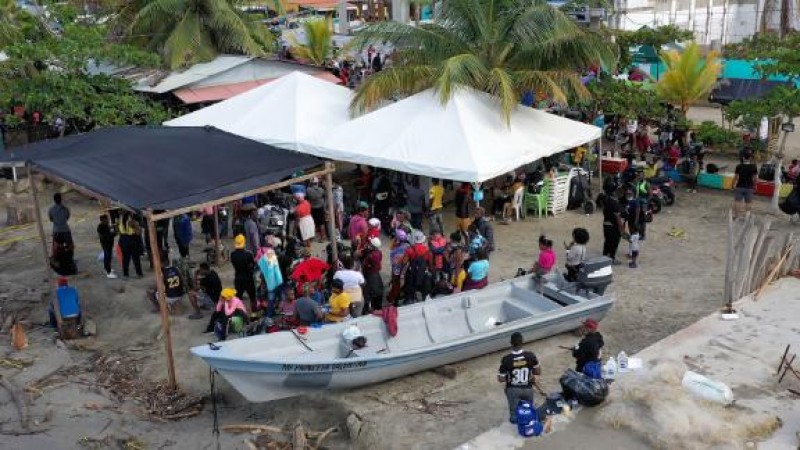
They travelled by the thousands to arrive here from Haiti, Venezuela, Chile, Brazil, and even further, from Ghana, Mali and Togo. Now they're stuck. Migrants start lining up on the beach of Necoclí, on the Caribbean coast of northern Colombia, in the early morning. Before them is the Gulf of Urabá, a stretch of the Caribbean Sea that interrupts their long trek northward toward the United States.
Once they cross -- if they cross -- they face a 60-kilometer trek through the jungles of the Darien Gap to reach Panama, and eventually Costa Rice and Nicaragua. If they survive that far, they will join the mass flows of desperate people walking north through Central America, all on their way to US-Mexico border. But for now, the hopeful travelers at Necocli are at an impasse. There is only one ferry company here that can take migrants across the gulf, and its capacity is stretched to the limit.
"We try to move eight or nine hundred migrants per day, but it's hard. Normally it's three or four hundred people, maybe five, but now is nine hundred people day after day after day. I've never seen something like this before," says Edward Villarreal, who works as a translator for ferry company Caribe S.A.S. Over the last few weeks, up to 15,000 migrants have arrived in Necocli, according to the Colombian ombudsman's office. The town, which normally has a population of just 22,000, is at a breaking point. "All of the health system, public and food services have collapsed," Necocli Mayor Jorge Tobon told local media last week.
Pakistan reports 4,722 fresh Covid cases in one day, Test positivity ratio of 8.2
Delta variant has spiked Covid-19 deaths in Africa by 80% in one month
UNICEF, Libya jointly agree working plan on protection of children
Africa's most populous city is battling floods and rising seas. It may soon be unlivable